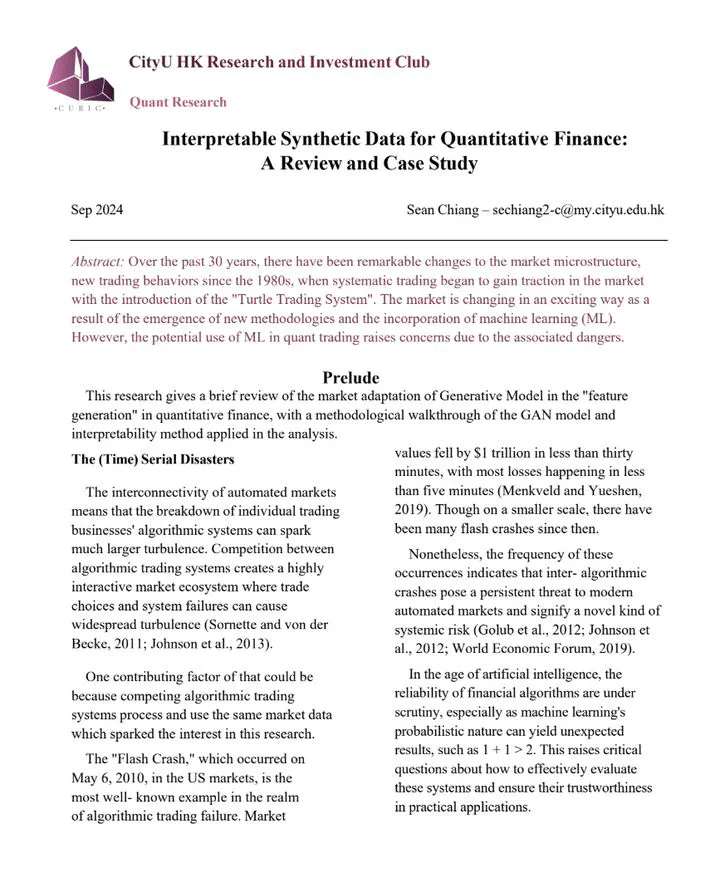Interpretable Synthetic Data for Quantitative Finance: A Review and Case Study
 Interpretable Synthetic Data for Finance
Interpretable Synthetic Data for FinanceResearch Overview
This research paper, conducted through the CityU Student Research & Investment Club (CURIC), explores the growing field of synthetic data generation for quantitative finance applications with a special emphasis on interpretability. As financial institutions increasingly rely on machine learning models for decision-making, the need for high-quality, diverse, and privacy-preserving financial datasets has become critical.
Key Contributions
Our paper makes several important contributions to the field:
- Comprehensive Review: A systematic review of state-of-the-art methods for generating synthetic financial time series data
- Interpretability Framework: A novel framework for evaluating the interpretability of synthetic data generation models in finance
- Case Study: A practical implementation demonstrating how to balance realism with interpretability in synthetic market data
- Evaluation Metrics: Introduction of new metrics specifically designed to assess both the quality and interpretability of synthetic financial data
Practical Applications
The research findings have direct applications for:
- Financial risk management and stress testing
- Development of trading strategies with limited historical data
- Privacy-preserving data sharing in financial research
- Training and validation of financial machine learning models
Future Research Directions
The paper concludes with recommendations for future research, highlighting opportunities to further enhance interpretability in synthetic data generation for quantitative finance while addressing emerging challenges in the field.